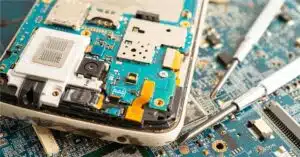Most engineers involved with temperature measurement know there are several methods for measuring temperatures of fluids and solids. The oldest and most common method for measuring the temperature of a fluid such as air is the standard mercury-in-glass thermometer. However, this is not acceptable for measuring surface temperatures of solid objects. For surface temperature … [Read more...]
Choosing the Right Liquid Cooling Quick Disconnects — Key Considerations for Optimal Thermal Management
By Cameron Koller, Marketing Development Manager, Parker Hannifin Quick Coupling Division As technology evolves, one challenge remains constant: heat. Servers, supercomputers, and data centers generate massive amounts of heat, with power densities often reaching 10 to 20 kilowatts per rack and, in some cases, significantly exceeding 50 kW in high-performance computing … [Read more...]
Augmenting Development of Electronics Cooling Technologies with Machine Learning Tools – a Heat Pipe System Example
The traditional pathway for development of thermal management technologies for electronics has been to analyze using heat transfer theory augmented by computational tools such as finite difference or finite element methods, CFD tools, or thermal management system simulation tools, sometimes in tandem with prototype system fabrication and testing. Combining recently available … [Read more...]
Theta-JC Measurements: Steady-State Compared to Transient Methods
Thermal characterization plays a vital role in electronic package reliability testing, design, and verification of manufacturing processes. The reliability of electronic packages is controlled, in part, by ensuring the maximum junction temperature is not exceeded during operation. Systems such as cell phones, electric vehicles and computers, must operate with die temperatures … [Read more...]
A Non-Contact Measurement Method for Thin Vapor Chambers by Photonic Technologies
Introduction In recent years, integrated circuit chips have enabled increasingly powerful computing capabilities as advanced process nodes have moved from DUV (deep ultra-violet) to EUV (extreme ultra-violet) lithography, allowing for higher fabrication resolution and transistor density. Additionally, advanced multi-die packaging has seen increased market demand. As a … [Read more...]
- 1
- 2
- 3
- …
- 78
- Next Page »










